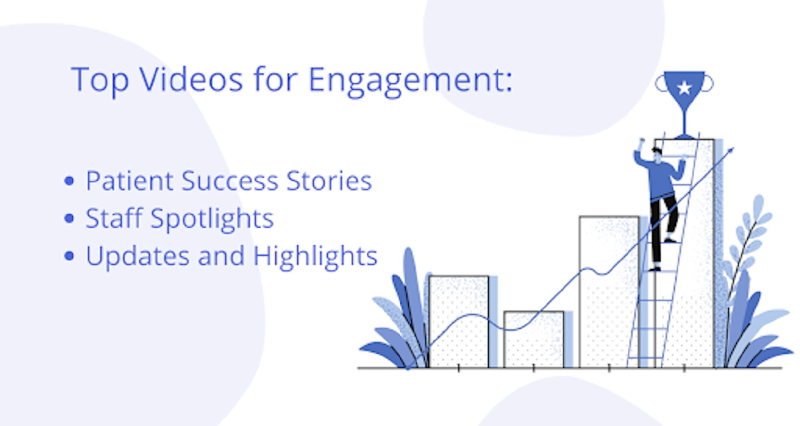A primary concern for most healthcare systems is staff engagement. This is especially true when focusing on recruitment and retention, which is expected to remain both a challenge and a top priority for years to come.
We continue to live in a volatile job market. On the whole, employee satisfaction is still low, and burnout is still high.
So what can we, as marketers, do about this?
We can’t alleviate the major issues. We don’t control how much staff get paid, or the resources that are or are not available.
However, what we can improve upon is the emotional connection between an organization and its staff. Staff want to know that their work means something, and is part of something bigger than themselves. On this note, we can help our organizations build a Culture of Engagement.
In a survey, we asked marketers from several organizations the following question:
How often do you share videos with your staff?
It turns out, we see less than 60% of networks creating content for staff! This is by far the biggest opportunity for growth in the industry.
By sharing content with your staff, you are reaching a larger audience, and in turn, accessing the greater community. Crucially, you are also showing your staff that you value them and are making an effort to really include them.
Video is central to staff engagement. Video’s Super Powers include:
- Grabbing attention
- Connecting emotionally
- Providing the same experience at scale.
Furthermore, millennials and Gen Zers’ ( who grew up with online video), will continue to constitute a larger percentage of the workforce. They expect video to be a normal part of communication.
Next, let’s cover how video helps build a Culture of Engagement. Before going through our list, I want to emphasize the one caveat. All of your content MUST be authentic. Your organization must be committed to building a genuine culture that puts people first. If not, your content strategy will backfire.
When you create marketing videos, first share them with your team, then with the public.
If you are not already doing this, start immediately. The benefit of this is that you’ll now have staff understand the messaging that is most important. This helps staff internalize what you are trying to promote. Another added benefit is the potential for staff to become brand ambassadors. This makes them better equipped to share your message with the community.
But where do we start?
Start with the most impactful stories, which include:
The best videos have a touching story of a real person at their core.
Patient success stories remind staff why they show up to work, as well as the positive impact they have on their communities. Furthermore, these types of videos can humanize an organization and actually increase network pride.
The second most impactful videos you can produce are Staff Spotlights.
Is there someone in your organization who is truly a star? Someone who goes above and beyond and is an inspiration to others they work with? Start there!
Interview them, get to know them, then publish and share their story. It’s such an impactful way for staff to get to know their coworkers. Even if they’ve never met that individual before, it’s motivating to see examples of someone who is representing the organization in a positive way.
The featured employee will feel appreciated, and their friends and family will feel pride. Most crucially, it’s authentic. This helps build a positive culture and inspire pride internally as well.
In short, Staff spotlights will go a lot farther than a pizza party or free coffee.
Third on the list are Updates and Highlights. These videos are an effective way to keep employees informed and on the same page, even across multiple different departments and locations.
Staff want to know about service line updates, and they want to be in the loop about how the organization is doing. They want to know about new community events that are happening. Staff value seeing how the organization is living its mission and helping the community.
As marketers, we are integral in creating a Culture of Engagement in our organizations. A staff that is engaged in our communications becomes tighter knit. That connection and enthusiasm will then extend outward into the community.


